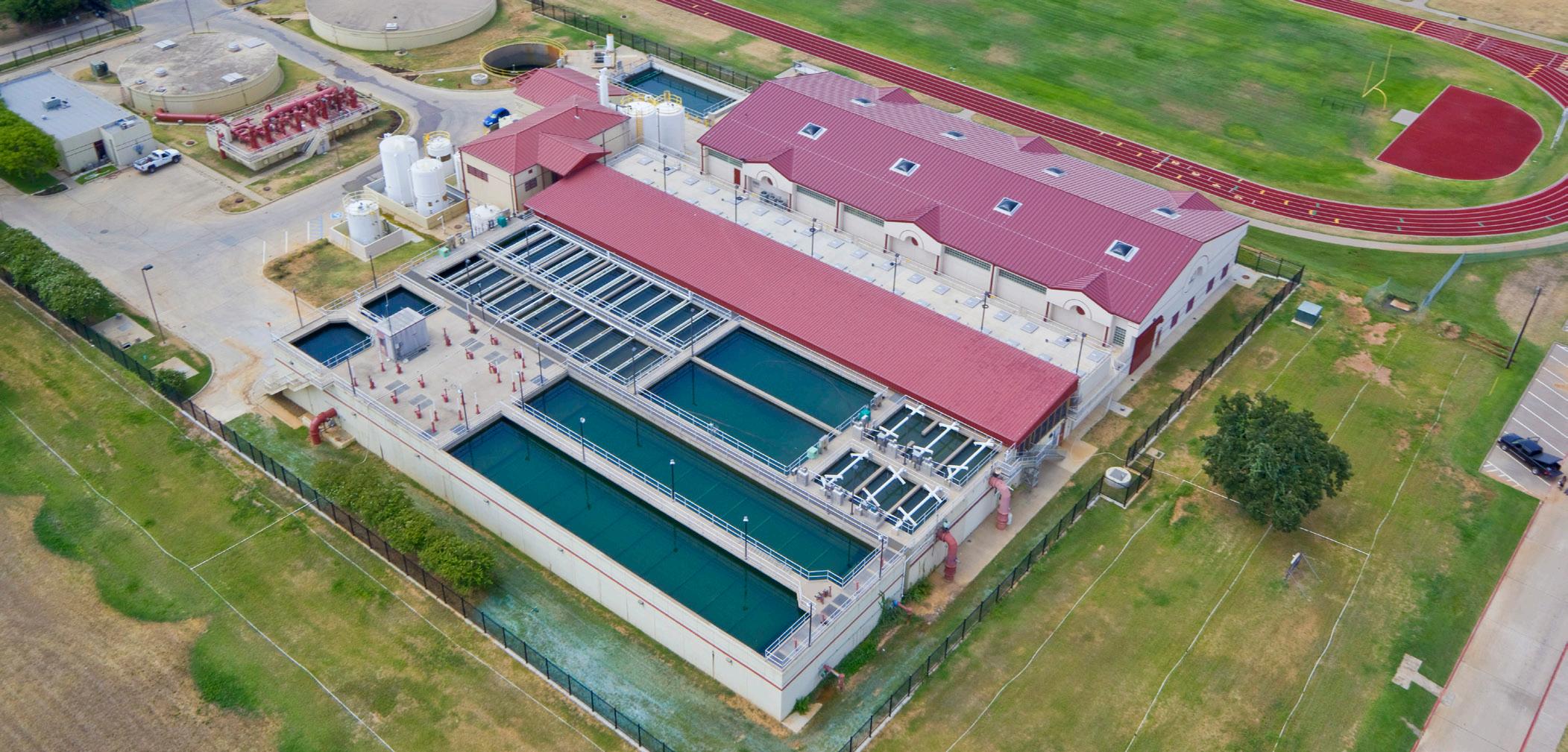2022 Mansfield Water Quality Report
Where Does our Water Come From?
The sources of drinking water (both tap water and bottled water) include rivers, lakes, streams, ponds, reservoirs, springs and wells. As water travels over the surface of the land or through the ground, it dissolves naturally-occurring minerals and, in some cases, radioactive material, and can pick up substances resulting from the presence of animals or from human activity.
The City of Mansfield purchases surface water from the Tarrant Regional Water District (TRWD). TRWD pumps water primarily from Cedar Creek and Richland Chambers Reservoirs in the east and Lake Benbrook in the west. A Source Water Susceptibility Assessment for your drinking water source(s) was last updated by the Texas Commission on Environmental Quality (TCEQ) in the year 2007. This information describes the susceptibility and types of constituents that may come into contact with your drinking water source based on human activities and natural conditions.

The information contained in the assessment allows us to focus source water protection strategies. For more information about your source(s) of water please refer to the TCEQ Source Water Assessment & Protection Viewer. Further details about sources and source water assessments are available in the TCEQ Drinking Water Watch.

Health Information for Special Populations
You may be more vulnerable than the general population to certain microbial contaminants, such as Cryptosporidium, in drinking water. Among those who could be at risk from infections: infants, some elderly or immunocompromised persons such as those undergoing chemotherapy for cancer, those who have undergone organ transplants, those who are undergoing treatment with steroids and people with HIV/AIDS or other immune system disorders. You should seek advice about drinking water from your physician or health care provider. Additional guidelines on appropriate means to lessen risk of infection by Cryptosporidium are available from the Safe Drinking Water Hotline (800-426-4791).
Este reporte incluye información importante sobre el agua para tomar. Para asistencia en español, favor de llamar al telefono 817-276-4230.


Water Contaminants
Drinking water, including bottled water, may reasonably be expected to contain at least small amounts of some contaminants. The presence of contaminants does not necessarily indicate that water poses a health risk. More information about contaminants and potential health effects may be obtained by calling the Environmental Protection Agency’s Safe Drinking Water Hotline at 1-800-426-4791.
Contaminants that may be present in source water include:
• Microbial contaminants, such as viruses and bacteria, which may come from sewage treatment plants, septic systems, agricultural livestock operations, and wildlife.
• Inorganic contaminants, such as salts and metals, which can be naturally-occurring or result from urban storm water runoff, industrial or domestic wastewater discharges, oil and gas production, mining or farming.
• Pesticides and herbicides, which may come from a variety of sources such as agriculture, urban storm water runoff and septic systems.
• Organic chemical contaminants, including synthetic and volatile organic chemicals, which are by-products of industrial processes and petroleum production and can also come from gas stations, urban storm water runoff and septic systems.

• Radioactive contaminants, which can be naturally-occurring or be the result of oil and gas production and mining activities.
In order to ensure that tap water is safe to drink, EPA prescribes regulations which limit the amount of certain contaminants in water provided by public water systems. FDA regulations establish limits for contaminants in bottled water which must provide the same protection for public health.
Contaminants may be found in drinking water that may cause taste, color, or odor problems. These types of problems are not necessarily causes for health concerns. For more information on taste, odor, or color of drinking water, please contact 817-728-3674.
Water Loss Statement
Mansfield Water Utilities monitors water loss in an effort to improve operational efficiencies in both the water treatment plant and the water distribution system. During the period of January to December, 2022, Mansfield Water Utilities reported a loss of 569,050,000 gallons of water. This is estimated at 8.59 percent of total water purchased.
Utilities incur real water losses from pipeline leaks, and apparent losses when customer water consumption is incorrectly measured or billed. The winter storm of 2021 is an example of real water loss as we experienced 3x our average water flow during that period. We also experience apparent losses when water meters begin declining with age, and less water consumption is registered than actually consumed.


